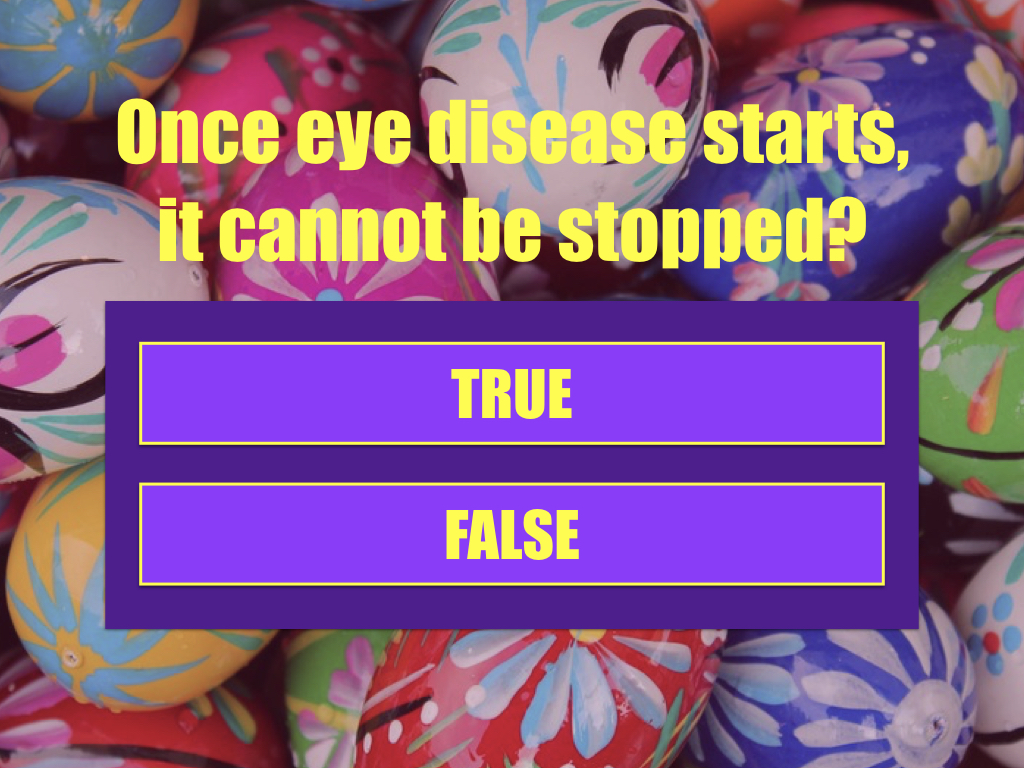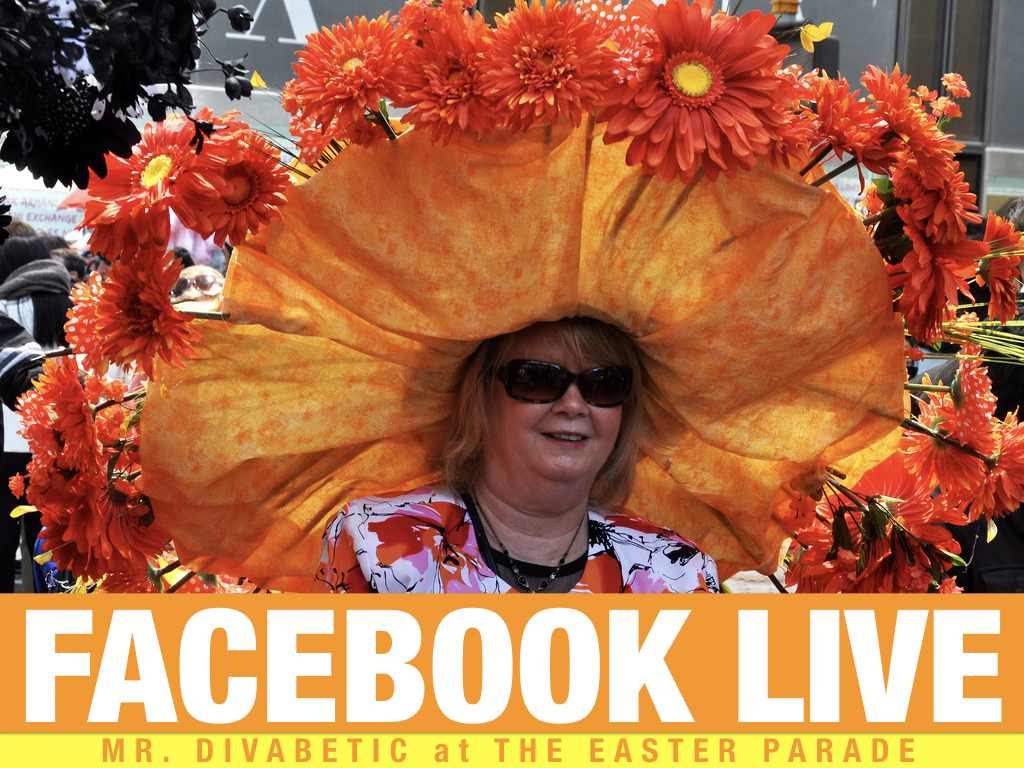For the fifth year in a row, I’’ll be raising awareness for diabetes in a fun, new way at this year’s Annual Easter Parade and Bonnet Festival in New York on Sunday, April 16, 2017, 12:30 PM.
We will discussing symptoms, causes and treatments for diabetes related eye disease.
Did you know that diabetic retinopathy is a health complication of diabetes and a leading cause of blindness?
Diabetic retinopathy occurs when diabetes damages the tiny blood vessels inside the retina, the tissue at the back of the eye. Diabetes also can cause leaking of blood vessels in the eyes, which leads to scarring and loss of vision.
How much do you know about diabetes related eye disease?
Test your knowledge with 2 questions from Mr. Divabetic’s Diabetes “Eye”-Q quiz courtesy of dLife
ANSWER: D (All of the above) Diabetic retinopathy is when there is damage to the blood vessels in the retina. Cataract is a clouding of the eye’s lens. Cataracts develop at an earlier age in people with diabetes. Glaucoma is an increase in fluid pressure inside the eye that leads to optic nerve damage and loss of vision. A person with diabetes is nearly twice as likely to get glaucoma as other adults.
ANSWER: B (False) Tightly managing your blood sugars is one way to help prevent diabetic eye disease or its progression. Controlling elevated blood pressure and cholesterol can also reduce the risk of vision loss. People who have good control of their diabetes are at much lower risk for diabetic eye disease.
In people with diabetes, high blood sugar damages the walls of the small blood vessels in the eye, altering their structure and function. As part of this condition, called diabetic retinopathy, these vessels may thicken, leak, develop clots, close off, or grow balloon-like defects called microaneurysms. Frequently, fluid accumulates in the part of the retina used in tasks such as reading; this condition is called macular edema. In advanced cases, the retina is robbed of its blood supply and grows new, but defective, vessels — a process called neovascularization. These fragile vessels can bleed, creating vision-impairing hemorrhages, scar tissue, and separation of the retina from the back of the eye (retinal detachment). The new vessels can also block fluid flow within the eye, producing glaucoma.
Pain or pressure in one or both of your eyes could be a sign of damage to your retinas. Blurry or double vision, dark spots or blank areas and trouble seeing out of the corners of your eyes are other symptoms to watch for.
If you have diabetic retinopathy, at first you may notice no changes to your vision. But over time, diabetic retinopathy can get worse and cause vision loss.
It’s important that anyone who has diabetes gets annual eye exams from an ophthalmologist so that retinopathy can be detected early.
Diabetes & Easter: Easter can be a difficult time to have diabetes, not least because of the temptation READ MORE
Don’t let the parade pass you by! Tune in to Facebook Live (Divabetic) to catch all the sights and sounds live from the Red Carpet with guests Divabetic Image & Style Advisor, Catherine Schuller AICI, CIP, diabetes advocate Laura Laria and Harlem’s Heaven hat designer, Evetta Petty and more!
Never been to the New York Easter Parade?
“Sunday best” gets new meaning during this annual procession, wherein participants show off elaborately constructed hats— shaped like gigantic Easter baskets, the NYC skyline and the Coney Island Cyclone! The tradition started in the mid-1800s, when high-society ladies would promenade in their Easter finery after church, and has since evolved into a showcase for millinery.





